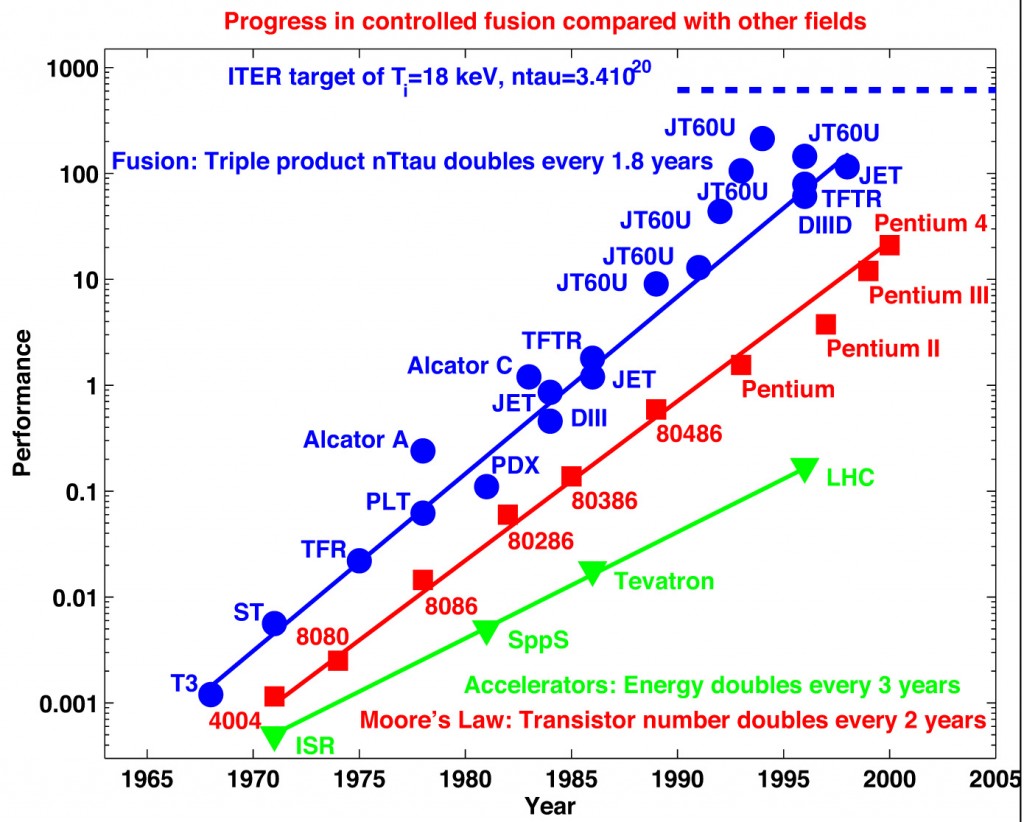ITER NEWSLINE
53
Down to Earth
Sabina Griffith

Progress in plasma confinement performance compared to that of other advanced technologies.
The "initial speculation list" that came out as a result of the two-day brainstorming workshop is indeed long, with more than 51 recommendations. But they may not be as crazy as you would expect after Watson's introduction. Focusing on the three major buildings that make up approximately 80 percent of the total construction cost—the Tokamak Complex, Hot Cell Facility, and Assembly Hall—seven of these 51 proposals were selected and recommended for further evaluation.
Proposal number one, for example, is to investigate whether the diagnostic building needs to be constructed on seismic pads like the Tokamak and tritium buildings. Another proposal is for an alternative design for ITER's bioshield: can it be manufactured as "moveable concrete blocks" supported by a prefabricated steel frame structure rather than by "cast in place" solid concrete? As in the previous example, the advantage here would be a more flexible construction method and a shorter construction time. Also, with this approach, the bioshield installation could be deferred to a later date.
Another proposal is to investigate the space allocation for the 60-metre-high Assembly Hall. "Here again, a lot of concrete could be transferred into a steel structure," Tim Watson says. "Instead of the whole building supporting the huge bridge cranes, why not consider gantry cranes for the Tokamak and the Assembly buildings?
A first estimate of the cost reductions stemming from these recommendations ranges from EUR 94 to 104 million. In order to confirm the figures, Civil Engineering is in the process of seeking external technical assistance to review the outcomes of the value engineering exercise in detail and to prepare a first schedule and resource plan on how to proceed with the proposals on the table. "One month later, we will hopefully bring in a larger team to develop the alternative designs," Watson explains. "The time to do this is limited as we have to freeze the design of the buildings to meet the deadline for the Architect-Engineer Procurement Arrangement signature in March 2009."
The European Domestic Agency in Barcelona that is in charge of the buildings has already given agreement in principle to investigate some of the cost saving ideas in further detail. Europe, hosting the ITER Project, will pay for the buildings.
return to Newsline #53


